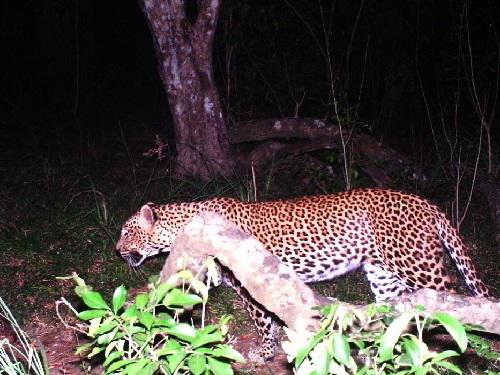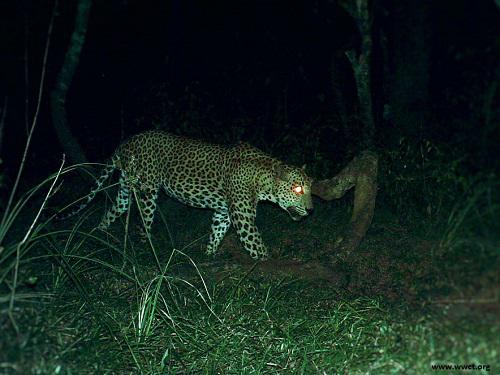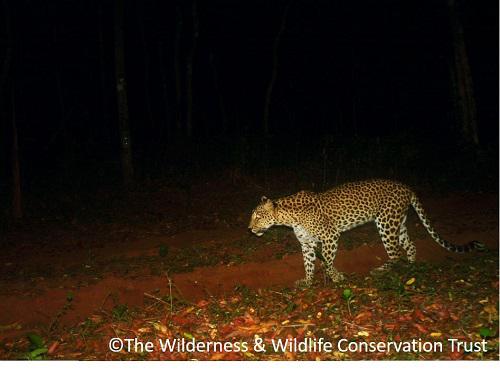Anjali Chandraraj Watson
This project aims at improving the understanding of Sri Lankan leopard ecology and population structure. Occupancy and abundance studies and non-invasive genetic analysis to determine relatedness across the island will attempt to reveal the conservation priorities for this endangered and potential keystone species.

Wilpattu adult female.
The endangered Sri Lankan leopard, the island’s sole apex carnivore, plays a potentially vital role in maintaining ecosystem structure and function. Additionally, as a wide ranging species, its conservation may afford protection for other species in this region of high biodiversity and endemism. Effective leopard conservation requires improved island-wide distribution and abundance estimates. It is also necessary to determine leopard population structure including possible sub-population occurrence and connections.

Wilpattu Maha wewa male.
To address these issues we are conducting occupancy and abundance surveys across varied habitats to detail regional - and further refine overall - population estimates. Having previously conducted surveys in other areas, we now focus on priority lowland dry zone (Wilpattu National Park) and a montane zone (Peak Wilderness Sanctuary) populations. We will undertake island-wide non-invasive faecal genetic analysis to assess population structure and identify landscape-level connections.

Remote camera image of adult female leopard.
This fundamentally valuable work will provide improved distribution estimates, habitat-specific abundance estimates and describe the hitherto unknown genetic population structure of this sub-species. With post-war development rapid, current, detailed information is vital to ensure that it is sustainable. Our results influence regional and national land use and conservation policy planning.
Site-specific abundance estimates form the basis for determining island-wide population trends. Current estimates used for P.p. kotiya IUCN Red List determination, provided by our project, require considerable refinement. Conducting more habitat-specific studies allows for increased appreciation of critical habitat-specific threats and provides quantitative data to support prioritization. During the course of the remote camera mark-recapture surveys we simultaneously address a number of other research targets, including fine-scale habitat selection analyses, prey abundance estimates and monitoring of other rare and elusive species of conservation concern (e.g. golden palm civet, fishing cat, rusty spotted cat and jungle cat).
Determining genetic relationships between sub-populations is vital as this can identify linkages impossible to understand otherwise, leading to the identification of presently unappreciated, highly threatened sub-populations or alternately exhibit that healthy island-wide connections exist. Either way, the implications for management are acute and can translate into landscape-level policy initiatives such as the conservation and/or creation of important corridors.
At project’s end we aim to have improved the island-wide population size estimate, a key component for species and eco-system conservation and management. We will have comparable abundance estimates across habitats which will allow for finer scale, habitat-specific management initiatives and the first overview of the island-wide connectivity of sub-populations, a profoundly important aspect of conservation planning.